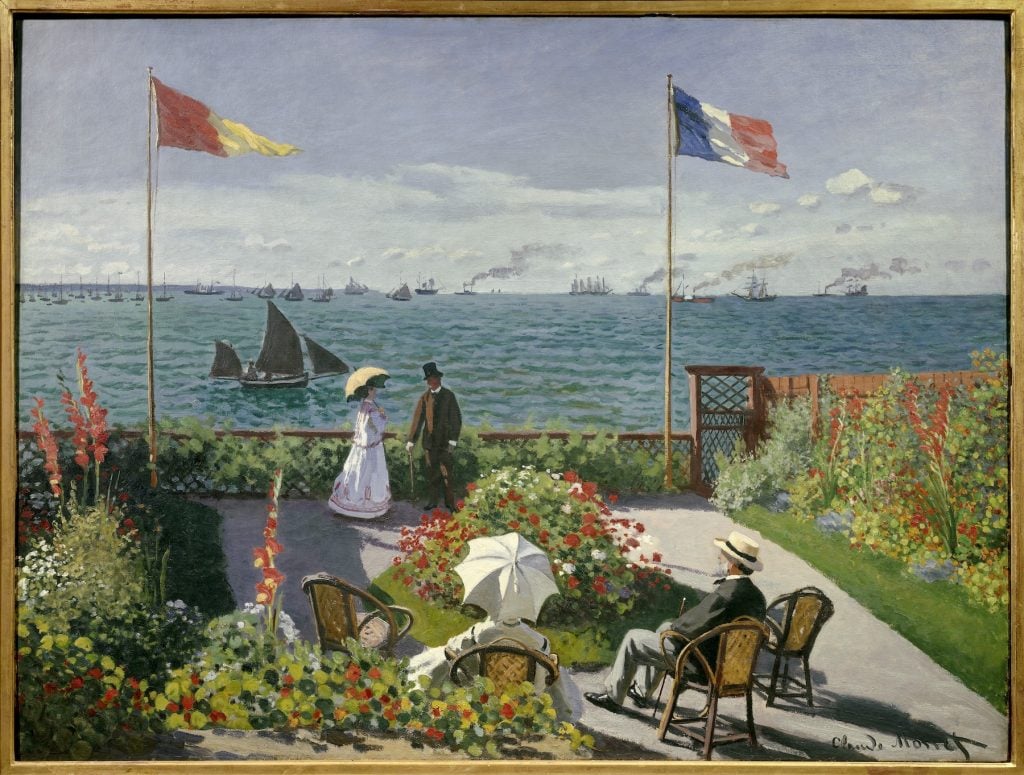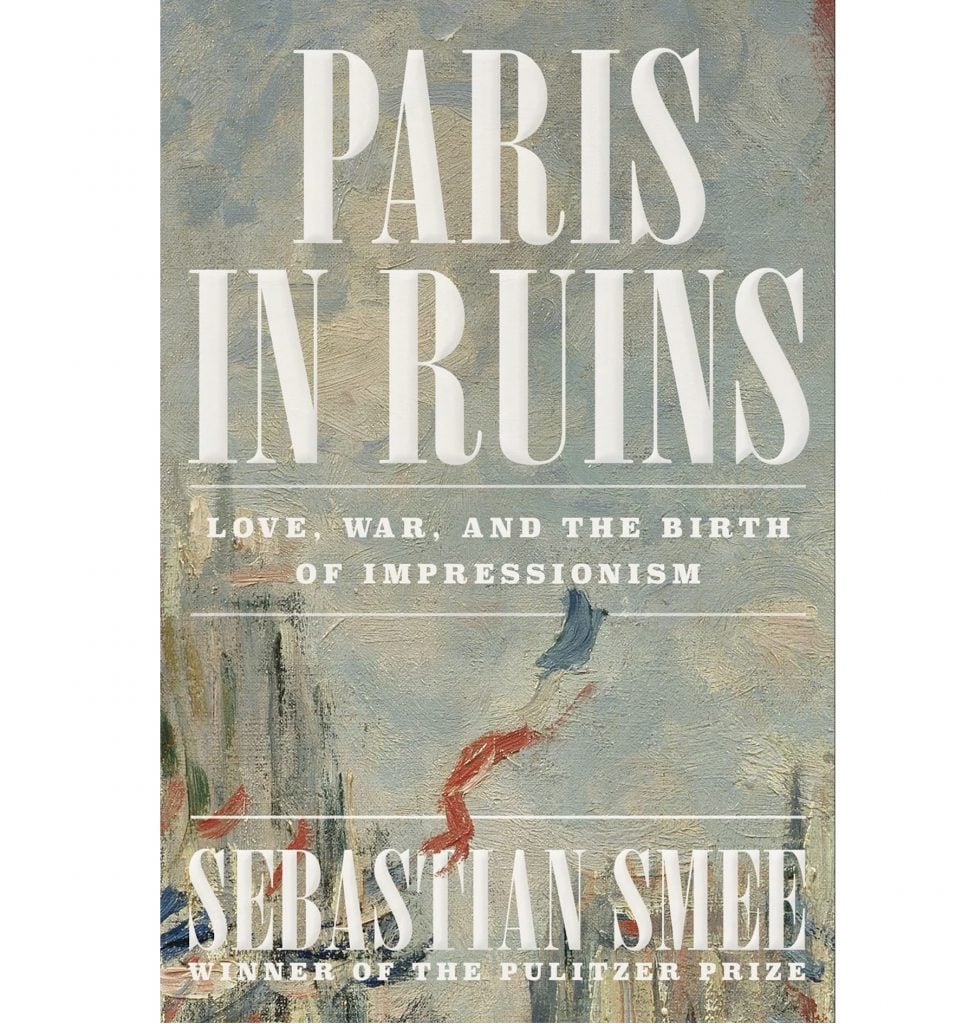Books
Here’s What Bothers Me About How ‘Paris in Ruins’ Rewrites Impressionist History
A review of Sebastian Smee’s 'Sebastian Smee, Paris in Ruins: Love, War, and the Birth of Impressionism.'

A review of Sebastian Smee’s 'Sebastian Smee, Paris in Ruins: Love, War, and the Birth of Impressionism.'

Marjorie Heins

Sebastian Smee’s Paris in Ruins is an addictively good read, weaving as it does the lives of several important Impressionist painters into the traumatic and bloody events of 1870-71 in France: the Franco-Prussian War, the Paris Commune, and the Commune’s brutal suppression. In the midst of it all, Smee gives us pulsating descriptions of the romance (almost surely unconsummated) between the painters Édouard Manet and Berthe Morisot—an always fascinating subject. But alas, the book has a major flaw: Its overriding message is just plain wrong.
Smee posits that the terrible events of 1870-71 in France “formed the backdrop… for the early days of the Impressionist movement.” The young artists’ response to all the horror, he claims, was “a new and suddenly deeper sense of existential fragility,” which resulted in Impressionism’s “emphasis on fugitive light, shifting seasons, glimpsed street scenes, and transient domesticity as expressions of this heightened awareness of change and mortality.”
That’s quite a mouthful, and there’s no doubt that the war and the Commune left their mark on everybody in France, but as a matter of simple chronology, Impressionism did not begin, or result from, these events. It began in the late 1860s when Claude Monet, Auguste Renoir, and Camille Pissarro, working in the towns and countryside just outside Paris, began deploying oil paint to capture the fleeting effects of outdoor light. Smee acknowledges this at one point, noting that a recreational spot along the Seine, La Grenouillère (literally, “the frog place”), was “where Monet and Renoir had painted the first Impressionist pictures.” This was in 1869—a time of political turmoil no doubt, but peaceful compared to the cataclysms of 1870-71. The contradiction between this place and time for the birth of Impressionism and Smee’s continuing insistence that it all arose later, from the trauma of the war and the Commune, doesn’t seem to concern him.

Paris in Ruins, Love, War, and the Birth of Impressionism by Sebastian Smee (W.W. Noron, 2024)
It would be fair enough to suggest, as he does, that the multiple traumas of bloodshed, invasion, near-starvation, and massive social dislocation in 1870-71 affected the artists who would later become known as Impressionists, and even that their presumed “sense of existential fragility” influenced the direction of their work. But it’s another thing entirely to confuse basic art history. The defining elements of Impressionist style predated the horrors of 1870-71. Impressionism was inspired by many things that were happening before 1870—most importantly, an intense desire to challenge the rigid, conservative values of the Paris Royal Academy of Fine Arts, which favored historical and mythological scenes rendered with smooth, invisible brushstrokes. The rebels wanted to paint modern life, and to do it with more expressive painting techniques.
Smee’s reinvention of Impressionist history is my major quarrel with Paris in Ruins, but there’s another, admittedly more minor, factoid that distorts his story as well. Lovers of Impressionism know that these artists were profoundly influenced by the Japanese woodblock prints, called ukiyo-e, that began to appear in France in the 1860s. These prints’ vivid colors, scenes of daily life, odd vantage points, and flat planes (showing no interest in illusions of depth or perspective) greatly appealed to the Impressionists-to-be. Smee reports that Claude Monet bought his first Japanese prints in 1871, at a shop in Holland. The implication is that this is where Monet first discovered them. The story of his discovery at the Dutch shop was evidently something Monet told his biographer, Gustave Geffroy, years later, so it’s understandable that Smee found it and repeated it. But more careful research would have revealed that Monet’s discovery of Japanese prints came earlier.
Japanese prints were available in Paris shops by the late 1860s, and as the Metropolitan Museum of Art website relates, Parisians saw their first formal exhibit of Japanese arts and crafts at the Universal Exposition of 1867. Monet was undoubtedly aware of all this. And the composition of Monet’s 1867 painting, Garden at Sainte-Adresse (on view at the Met), with its flat planes and high vantage-point view of a terrace overlooking the Normandy coast, is uncannily similar to a print by Katsushika Hokusai, Turban-shell Hall of the Five-Hundred-Rakan Temple, a scene on a terrace looking out over a body of water to Mount Fuji in the distance. Renoir even referred to his friend Monet’s Sainte-Adresse as “the Japanese painting.” Monet at some pointed owned a copy of the Hokusai print; it’s now at his house in Giverny. The Met website leaves no doubt that ukiyo-e prints were Monet’s source for the “high-keyed colors” and flatness of his Sainte-Adresse painting in 1867.
Now this question of when Monet first encountered ukiyo-e prints may seem like a quibble, of interest only to the cognoscenti. But Smee’s dating of Monet’s discovery of Japanese prints to 1871, when in fact it was almost surely several years earlier, is consistent with his postdating Impressionism’s origins in general to the early 1870s. And it points to another problem: Smee gives us no footnotes or other indications of where he got specific facts or quotations. There’s only a general bibliographical note. This absence, combined with an overly imaginative rendering of his subjects’ emotional states and a taste for melodrama (“Édouard and Berthe were connected by tendrils of affection that had mysteriously thickened”—to give one example) make Paris in Ruins an ultimately unreliable contribution to the ever-expanding story of Impressionism.
Marjorie Heins is a writer, a former First Amendment lawyer, and currently a docent in the Impressionism/Post-Impressionism collection at the Metropolitan Museum of Art. Nothing in this article, apart from references to its website, reflects an opinion of the Met Museum.